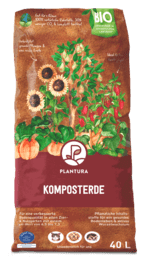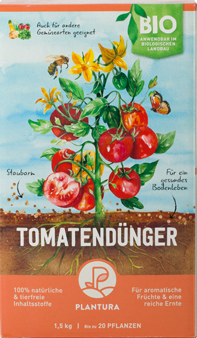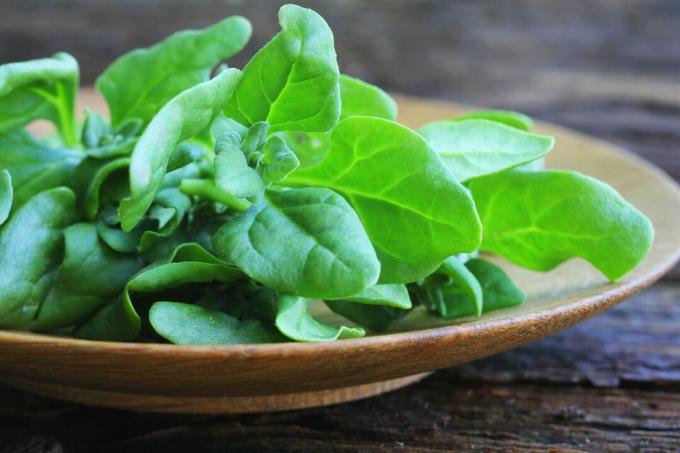New Zealand spinach is a good alternative to classic spinach. Because unlike New Zealand spinach it is hardly possible to grow spinach in the summer, as the plants then start to flower particularly quickly.

Although the name, taste and appearance of the leaves might suggest it, New Zealand spinach (Tetragonia tetragonioides) not with that real spinach (Spinacia oleracea) related. You can still use New Zealand spinach in recipes like spinach. So even in summer you are always well supplied with fresh leafy vegetables from your own garden. Everything about growing New Zealand spinach - from sowing, care and harvest to tips for preparing New Zealand spinach - can be found in this article.
contents
- New Zealand spinach: origin and properties
- Location and sowing of New Zealand spinach
- The most important care measures
- Is New Zealand spinach hardy?
- propagation
- Harvesting and preparing New Zealand spinach
- Is New Zealand spinach poisonous?
New Zealand spinach: origin and properties
New Zealand spinach is native to the coastal regions of New Zealand and Australia, including Tasmania. in the 18th In the 19th century it was first brought to England by seafarers and from there it made it into the gardens of the rest of Europe.
After a rather slow juvenile development, New Zealand spinach grows quickly and forms bushy, herbaceous plants up to 50 cm high. Shoots lying on the ground can grow up to 1 m in length. They are heavily branched and very leafy. So New Zealand spinach does well as a live mulch and edible ground cover used in the vegetable garden.

The stalked, triangular leaves are 3 to 12 cm long, dark green and relatively thick. They taste similar to spinach, just a little stronger and more intense.
Around August, the formation of small, yellow flowers begins in the leaf axils, from which the characteristic, four-winged fruits later develop. These contain the seeds of the New Zealand spinach. The four tips of the seeds are also responsible for the plant's Latin name, as Tetragonia is made up of the Greek words for the number 4 and "reproduction". The alternative name Vierhorn for New Zealand spinach can also be traced back to it.

Is New Zealand spinach perennial? Basically, New Zealand spinach is described as an annual to short-lived perennial plant. With us, however, New Zealand spinach is not perennial, as it already dies at temperatures around 0 °C. However, the seeds of New Zealand spinach can survive the winter and germinate again next year.
Location and sowing of New Zealand spinach
The ideal location for New Zealand spinach is sunny and is characterized by loose, easily warmed, humus-rich soil with good water retention capacity. In the garden it is therefore advisable to use ours before planting, for example Plantura organic compost to incorporate into the ground. It convinces with its high humus content, which has a long-term positive effect on the water and heat balance of the soil. In addition, it is peat-free and therefore particularly climate-friendly. Alternatively, you can use good, mature compost.

Plantura organic compost
Organic, peat-free & climate-friendly:
Also ideal for raised beds
ensures a rich, aromatic harvest
Since the seeds take a long time to germinate outdoors and young plants are sensitive to cold temperatures, it is advisable to pre-culture and sow New Zealand spinach indoors. This is possible from mid-February.
- Start by soaking the seeds in lukewarm water for about 24 hours.
- Pots with a diameter of 8 – 10 cm are suitable as growing vessels. These are made with a nutrient poor soil like ours Plantura Organic Herb & Seed Soil filled. Moisten the substrate a little before filling.
- To sow New Zealand spinach, plant about 2-3 seeds per pot about 1 cm deep in the ground. Lightly pour everything again.
- Place the pots in a bright place with a room temperature of at least 20 °C. Nevertheless, it can take up to 3 to even 6 weeks for the seeds to start germinating. During this time, the soil must not dry out.
- After germination, the seedlings can still be left in a very bright place. If several seeds have germinated per pot, only the strongest seedling is left and the rest are removed.
- In addition to regular watering, you can now also start adding some fertilizer to the watering water about every 2 to 3 weeks. Ours is a good example Plantura Organic Tomato & Vegetable Fertilizer.
- After the ice saints, i.e. around mid-May, the young New Zealand spinach plants can be planted outdoors. However, harden off the plants beforehand by placing them in the sun for a few hours on nice days.

New Zealand spinach in the garden plants
- Prepare the soil by clearing it of weeds, loosening it and meanwhile adding some compost or ours Plantura organic compost incorporate.
- When planting the New Zealand spinach, keep a distance of at least 50 x 50 cm.
- After planting, the plants are watered well.
Plant New Zealand spinach in a pot
- Choose a pot that is at least 5 liters in volume and has a drainage hole at the bottom. This should be filled with humus-rich soil. Here is ours Plantura organic universal soil because the substrate is not mixed and pure compost is too nutritious for the needs of New Zealand spinach.
- Slightly moisten the soil and then place one plant in each pot. Afterwards you should water everything well again.
- Put the pot in a warm and sunny place.

Good neighbors for New Zealand spinach in mixed cultivation: Since it belongs to the ice plant family (Aizoaceae) and you won't find any other members of this family in our vegetable gardens, you don't have to in the crop rotation still at the mixed culture be careful of New Zealand spinach. Good neighbors of New Zealand spinach, for example, are various cabbages (Brassica) such as tomatoes (Solanum lycopersicum), where the New Zealand spinach can act well as a ground cover.
The most important care measures
Due to the slow development of young plants, weeds have to be kept in check, especially at the beginning. This is achieved through regular hacking. Once the stock of New Zealand spinach has closed, weeds hardly have a chance.
Although it tolerates dry spells well, New Zealand spinach thrives significantly better and produces higher yields when well watered. Especially in hot, dry summers, the watering can should be used regularly.
New Zealand spinach, like spinach, is counted among the medium consumers. This means that in our garden soil, which is often well supplied with nutrients anyway, it usually thrives without additional fertilization. In addition to working in compost or compost soil before planting, it encourages the growth of New Zealand spinach nevertheless, if you meanwhile again like a granulated long-term fertilizer ours Plantura organic tomato fertilizer spends. This is 100% animal-free and has a high organic content, which is why it also promotes healthy soil life.

Plantura organic tomato fertilizer
effective long-term effect,
good for the soil, harmless for humans, animals and nature
In order to promote good branching and the formation of many leaves, you can already cut off the shoot tips of the young plants.
Diseases and pests mostly leave the New Zealand spinach alone. Only aphids populate it every now and then. These usually do not cause much damage, but are annoying when washing the New Zealand spinach.
Is New Zealand spinach hardy?
New Zealand spinach is not hardy and dies at temperatures around 0 °C. It belongs to the plant group of therophytes, which die off after the formation of seeds and survive only through their seeds. For this reason, overwintering New Zealand spinach is not possible with us. However, the plants self-seed. With a bit of luck, seeds will germinate there again in the following year – albeit often relatively late, which also means a somewhat later harvest. To get around this, you can harvest the seeds of New Zealand spinach in the fall and bring them forward for an earlier harvest from February.

propagation
The propagation of New Zealand spinach from seeds is usually easy. Since it predominantly fertilizes itself, there are in most cases no nasty surprises when replicating. You can harvest the seeds in autumn as soon as they turn brown and can be detached easily. Then you let them dry a bit and then store them in a cool, dry and dark place until you sow them from March as described above. The seeds remain viable for about 3 years.

Harvesting and preparing New Zealand spinach
If you have decided to grow it early, you can start harvesting New Zealand spinach around July. Then leaves and shoot tips can be picked regularly, every 1 to 2 weeks, and used in the kitchen until autumn. If New Zealand spinach is harvested less frequently, the plants will not branch as well, fewer leaves will form and the plants will start to form seeds earlier. To harvest New Zealand spinach correctly, you either pinch off individual leaves or shoot tips that are no more than 10 cm long with your fingers or use a clean knife. In order for the plants to sprout again, they should neither be cut off too deeply nor picked bare.

Like all leafy greens, New Zealand spinach should be eaten as soon as it is harvested. However, it can be stored for a few days at an optimum temperature of 0 to 2 °C and high humidity. To achieve this, you can, for example, wrap the New Zealand spinach in a damp cloth and then put it in the fridge.
When preparing New Zealand spinach, there are no differences to the procedure for real spinach. Replacing real spinach with New Zealand spinach in recipes is therefore possible without any problems. New Zealand spinach is often used in salads or for fillings and quiches, for example. You can also freeze New Zealand spinach without hesitation.

Can you eat New Zealand spinach raw? New Zealand spinach can be eaten raw in moderation. Many of the ingredients in New Zealand spinach, such as vitamin C, are retained in this way. The only downside is that raw New Zealand spinach contains more oxalic acid than cooked spinach. Therefore, one should not overdo it with the raw consumption.
Is New Zealand spinach poisonous?
New Zealand spinach contains oxalic acid and, like almost all leafy greens, can have elevated nitrate levels.
Since the general rule is: the more light, the lower the nitrate content. Since New Zealand spinach is usually grown in sunny locations in summer, nitrate is usually not an issue.
The amount of oxalic acid in New Zealand spinach is also safe for most people, as long as you don't overdo it. The content can also be reduced by briefly blanching New Zealand spinach and consuming it in combination with foods containing calcium. A suitable recipe for New Zealand spinach is, for example, New Zealand spinach in cream sauce.

Of the Good Henry (Chenopodium bonus henricus), also known as wild spinach, is an almost forgotten spinach plant that is even related to real spinach and, unlike New Zealand spinach, is perennial.
...and receive concentrated plant knowledge and inspiration directly in your e-mail inbox every Sunday!



